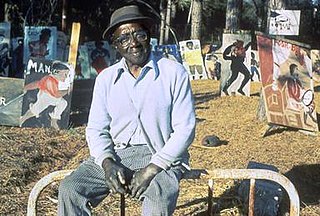
Thomas "Sam" Doyle (1906–1985) was an African-American artist from Saint Helena Island, South Carolina. His colorful paintings on sheet metal and wood recorded the history and people of St. Helena's Gullah community.
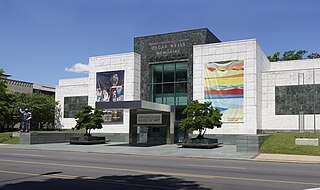
The Birmingham Museum of Art is a museum in Birmingham, Alabama. Its collection includes more than 24,000 paintings, sculptures, prints, drawings, and decorative arts representing various cultures, including Asian, European, American, African, Pre-Columbian, and Native American. The museum is also home to some Renaissance and Baroque paintings, sculptures,and decorative arts from the late 13th century to c. 1750.
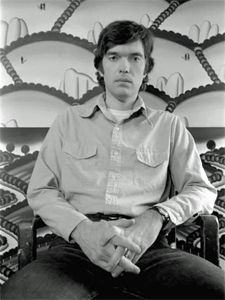
Roger Brown was an American artist and painter. Often associated with the Chicago Imagist groups, he was internationally known for his distinctive painting style and shrewd social commentaries on politics, religion, and art.

Thornton Dial was a pioneering American artist who came to prominence in the late 1980s. Dial's body of work exhibits formal variety through expressive, densely composed assemblages of found materials, often executed on a monumental scale. His range of subjects embraces a broad sweep of history, from human rights to natural disasters and current events. Dial's works are widely held in American museums; ten of Dial's works were acquired by the Metropolitan Museum of Art in 2014.

Amy Pleasant is an American painter living and working in Birmingham, AL.

John Bunion (J.B.) Murray was an abstract expressionist painter from Glascock County, GA. His work has been shown among folk art exhibitions and is included at the American Folk Art Museum and the Smithsonian American Art Museum, and has been featured in many museum exhibitions, including "Self-Taught Genius" at AFAM and "When the Stars Begin to Fall" at the Studio Museum. His work is best known for its codified use of colors and improvised script, called "spirit script," which could only be translated by the artist.
Willie Young is a 20th-century American artist. Young is mainly self-taught, and his work has been exhibited alongside other prominent outsider artists, such as Bill Traylor, Nellie Mae Rowe and Thornton Dial. The main body of his work consists of delicately rendered graphite drawings.
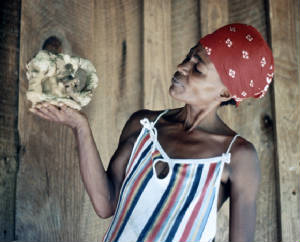
Juanita Rogers was a self-taught American folk artist. She was born in Tintop, Alabama to Thomas and Sally Rogers, although she claimed she was adopted after arriving in North Montgomery by carnival train at the age of five. Her mother was part Creek Indian, and died when Juanita was about twenty. Juanita attended a Catholic mission school. She was married to Sol Huffman, who died in 1980.
Joe Minter is an African American sculptor based in Birmingham, Alabama. His African Village in America, on the southwest edge of Birmingham, is an ever-evolving art environment populated by sculptures he makes from scrap metal and found materials; its theme is recognition of African American history from the first arrivals of captured Africans to the present. Individual pieces from Minter's thirty-year project have been in major exhibitions in the United States and are in the permanent collections of the National Gallery of Art, the Smithsonian American Art Museum, and the Metropolitan Museum of Art, among others.
Vernon Burwell (1916–1990) was an African-American sculptor known for his painted cement sculptures of animals and busts of historical figures such as Abraham Lincoln, Sojourner Truth, and Martin Luther King Jr.
Arthur Dial was an American painter and sculptor who lived and worked in Bessemer, Alabama. He was a part of the Dial family of artists, which includes his older brother, Thornton Dial, and his nephews, Thornton Dial Jr., Richard Dial, and Ronald Lockett.
Richard Dial is an African–American designer and sculptor known for his metal works and anthropomorphic furniture. Dial lives and works in Bessemer, AL.
Thornton Dial Jr. is a contemporary African-American painter, sculptor, and assemblage artist living and working in Bessemer, Alabama. He is the eldest son of prolific modern artist, Thornton Dial Sr. His work is best identified by its bold, evocative political and social commentary.
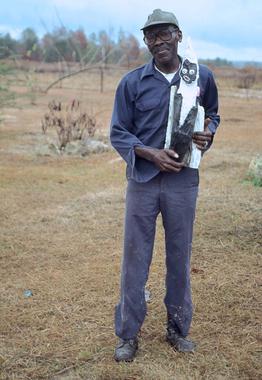
Ralph Griffin (1925–1992) was an American sculptor known for his sculptures made from tree roots.

Dilmus Hall (1896–1987) was a modern African American sculptor from Athens, Georgia.
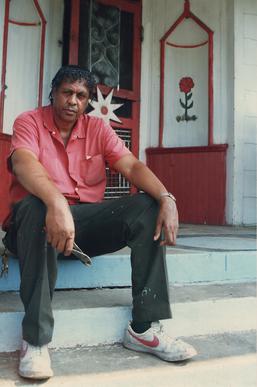
Joe Louis Light (1934–2005) was an American painter from Dyersburg, Tennessee. His work focuses on transcendentalism, attaining spiritual or moral enlightenment, and the balance and order of the universe.
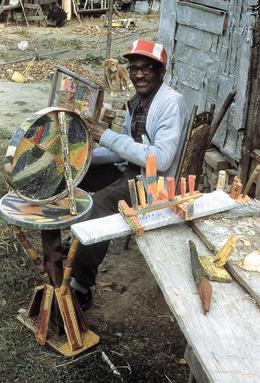
Leroy Person (1907–1985) was an American sculptor and wood carver from a remote region in northeastern North Carolina. Person's sculptures, and later, drawings, are recognized for their particular sensitivity to color and surface markings.
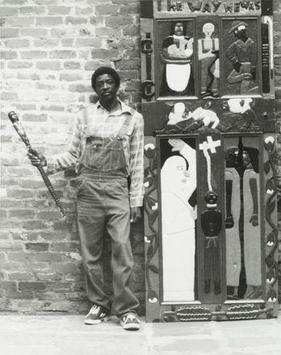
Herbert Singleton (1945–2007) was an American bas-relief sculptor and painter based in New Orleans, Louisiana. His work documented the tribulations of life in the Algiers neighborhood of New Orleans.
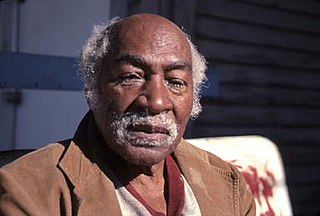
Henry Speller (1900–1997) was an American artist and blues musician working in Memphis, Tennessee. His style of drawing and painting is characterized by ornate, colorful, intimidating figures which he likened to "characters from Dallas".

Jesse James Aaron (1887–1979) was an American sculptor and wood carver. Aaron began making art in his early 80s. He rapidly gained recognition, earning a Visual Arts Fellowship from the National Endowment for the Arts. His work is held in the permanent collections of several museums including the High Museum of Art and the Smithsonian Museum of American Art.














